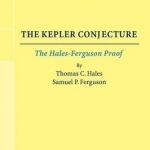The Kepler Conjecture
BookThis item doesn’t have any media yet
2011 | Science & Mathematics
The Kepler conjecture, one of geometry's oldest unsolved problems, was formulated in 1611 by Johannes Kepler and mentioned by Hilbert in his famous 1900 problem list. The Kepler conjecture states that the densest packing of three-dimensional Euclidean space by equal spheres is attained by the "cannonball" packing. In a landmark result, this was proved by Thomas C. Hales and Samuel P. Ferguson, using an analytic argument completed with extensive use of computers. This book centers around six papers, presenting the detailed proof of the Kepler conjecture given by Hales and Ferguson, published in 2006 in a special issue of Discrete & Computational Geometry. Further supporting material is also presented: a follow-up paper of Hales et al (2010) revising the proof, and describing progress towards a formal proof of the Kepler conjecture. For historical reasons, this book also includes two early papers of Hales that indicate his original approach to the conjecture. The editor's two introductory chapters situate the conjecture in a broader historical and mathematical context. These chapters provide a valuable perspective and are a key feature of this work.
Related Items:
| Published by | Springer-Verlag New York Inc. |
| Edition | Unknown |
| ISBN | 9781461411284 |
| Language | N/A |
Images And Data Courtesy Of: Springer-Verlag New York Inc..
This content (including text, images, videos and other media) is published and used in accordance
with Fair Use.
